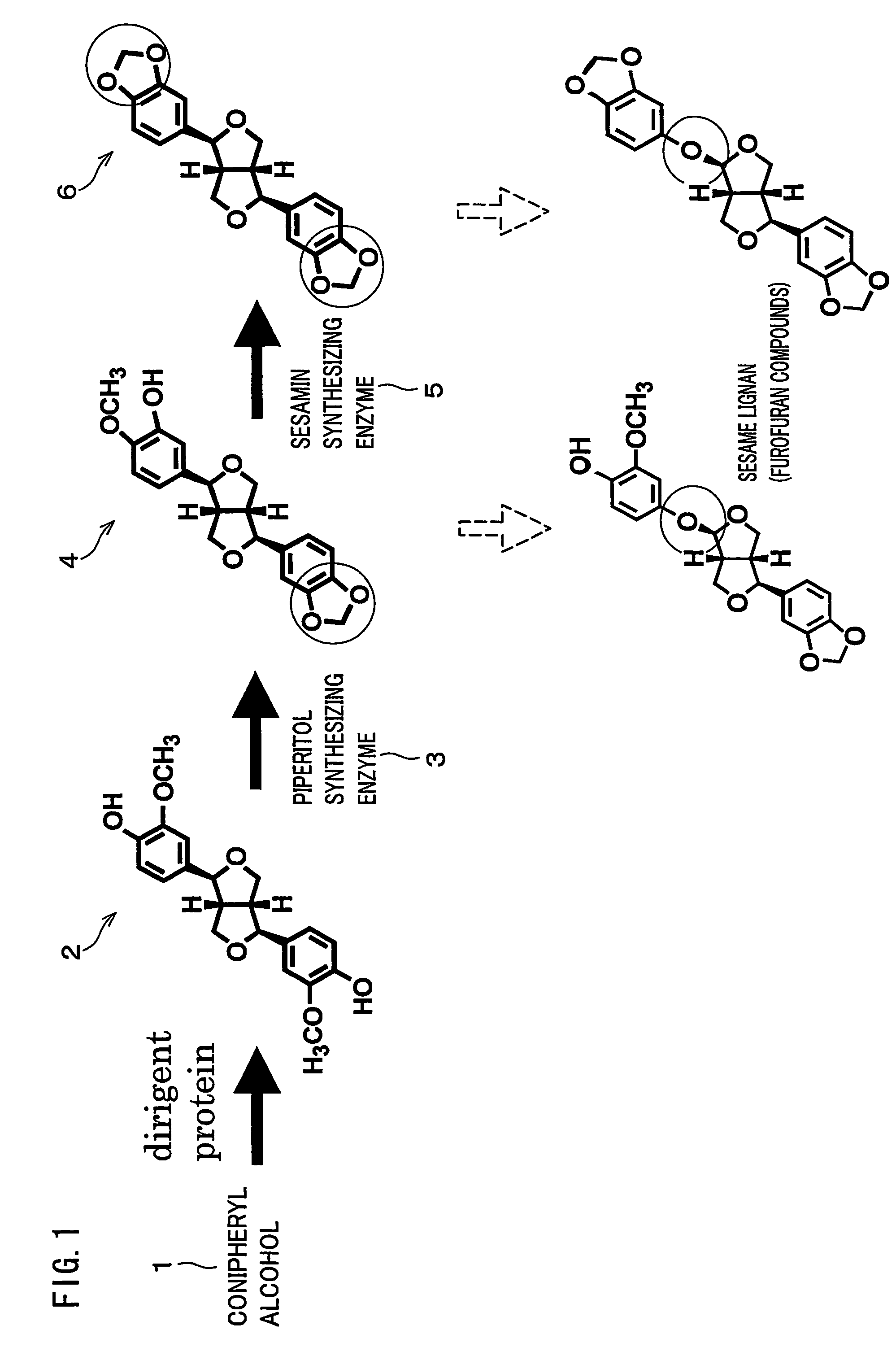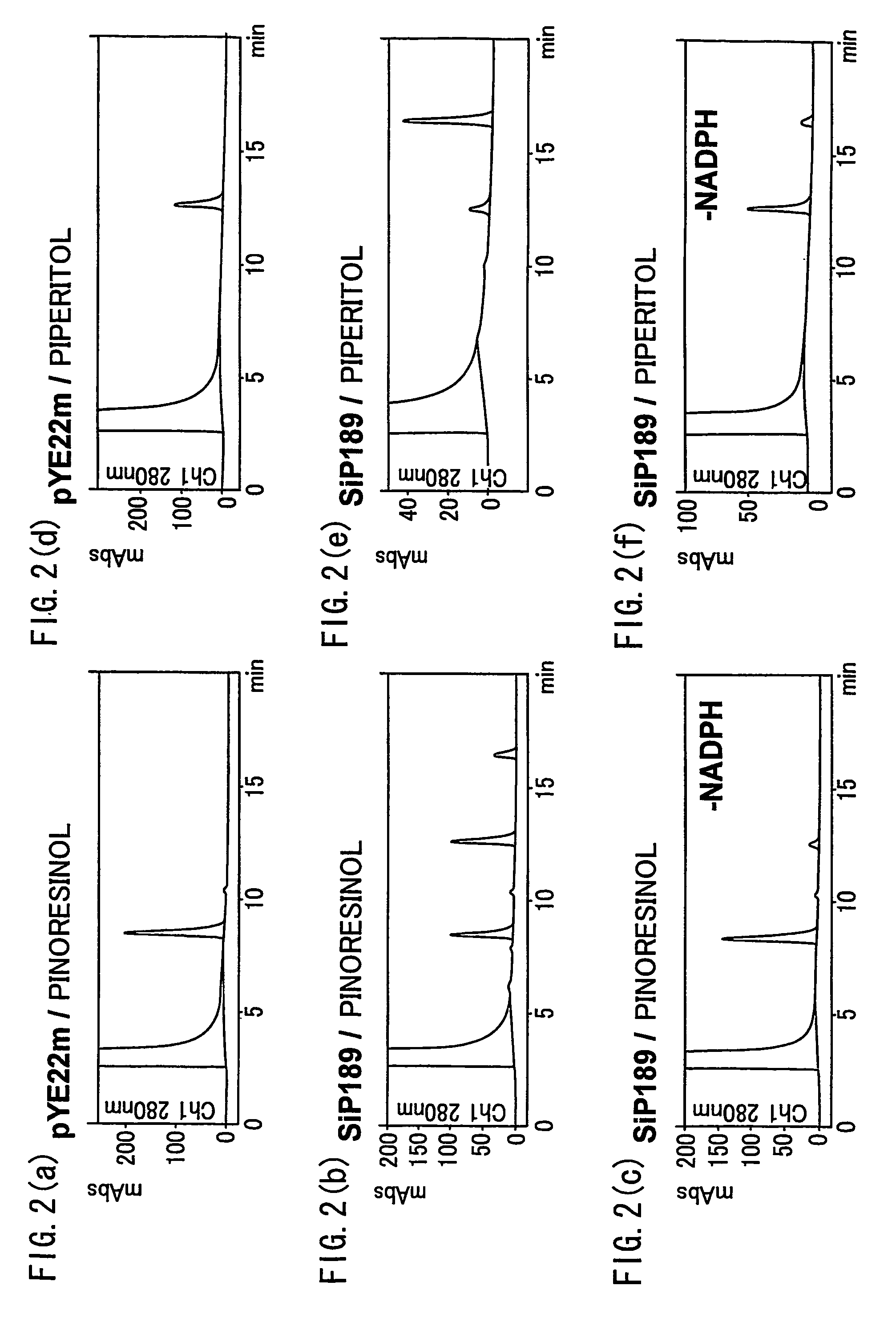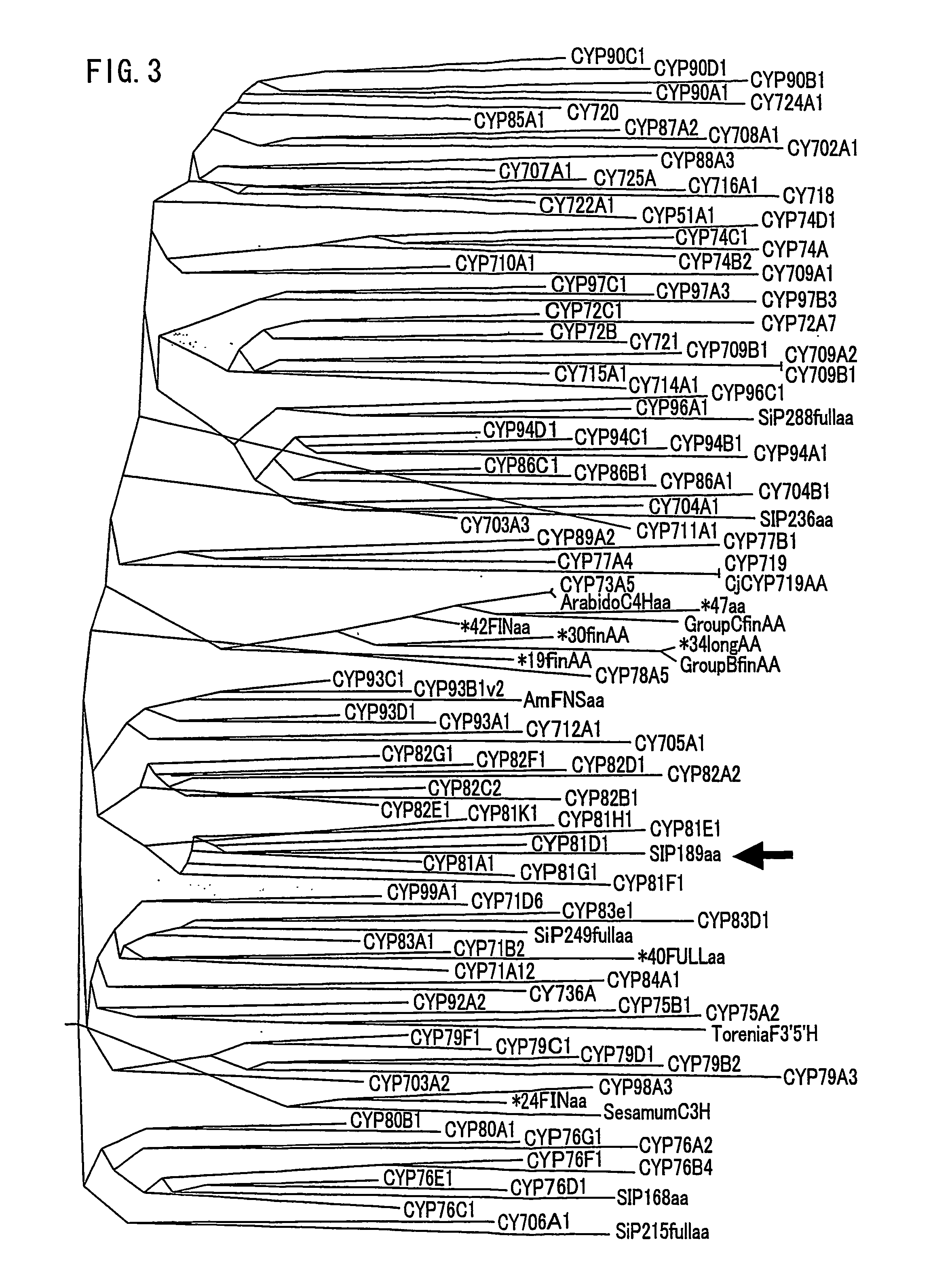Gene encoding an enzyme for catalyzing biosynthesis of lignan, and use thereof
a technology of lignan and gene encoding, which is applied in the direction of peptides, enzymology, dna/rna fragmentation, etc., can solve the problems of no enzyme purification, no cytochrome p450 is involved in the formation of methylene dioxybridge, and difficult to improve productivity or reduce the cost of sesamin production
- Summary
- Abstract
- Description
- Claims
- Application Information
AI Technical Summary
Benefits of technology
Problems solved by technology
Method used
Image
Examples
example 1
Preparation of lignan from Forsythia intermedia
[0177]Sixty grams of dried Forsythia intermedia leaves was boiled in 3 L water for 30 minutes, and the extract was filtered with a filter (circle; 300 mm; Tokyo roshi Kaisha). After reducing the solvent volume of a filtrate dispensed with an evaporator, the sample was freeze-dried (30 / N), and an extracted freeze-dried sample was obtained (21.6837 g).
[0178]Seven grams of the extracted freeze-dried sample was re-dissolved in 100 ml water and was homogenized by ultrasonic wave. Then, a column filled with 400 ml Diaion HP-20 resin (Mitsubishi Chemical Corporation) was washed with 800 ml of 50% acetone and equilibrated with 2 L water. Using the column, the homogenized sample was crudely purified. Specifically, after loaded with the sample, the column was washed with 800 ml water, followed by first elution with 800 ml of 50% methanol, and second elution with 800 ml of 100% methanol.
[0179]Each sample obtained from the first elution and second...
example 2
Lignan Analysis in Sesame Seeds
[0181]Immature sesame seeds were collected out of the sheath of cultivated sesame, and were freeze-dried to extract lignans with acetone. The following describes a preparation method of acetone extract.
[0182]About 100 mg of freeze-dried sample of crushed sesame seeds was dissolved in 1 ml of acetone to obtain an acetone extract. 100 μl of acetone extract was dried and re-dissolved in 20 μl DMSO, followed by addition of 80 μl of 50% acetonitrile containing 0.1% TFA. The solution was filtered with the Millex-LH filter (Millipore Corporation, 0.45 μm / 4 mm) to prepare a sample for HPLC analysis. The result of HPLC analysis confirmed the presence of lignans, with their retention times matching the retention times of piperitol (a standard sesame lignan (control)) (retention time of about 12 minutes), sesamin (retention time of about 16 minutes), and sesamolin (retention time of about 18 minutes).
[0183]The sesame seeds were divided into four stages according ...
example 3
Preparation of Sesame cDNA library
[0190]From the sesame seeds used in Example 2, total RNA was extracted with the RNeasy Plant Mini Kit (QIAGEN) according to the method recommended by the manufacturer. From the extracted RNA, 5 μg of poly A(+) RNA was obtained using the oligotex-MAG mRNA purification kit (TaKaRa). Using the poly A(+) RNA as a template, cDNA library was constructed with the ZAP Express cDNA Synthesis Kit and ZAP Express cDNA Gigapack3 Gold Cloning Kit (Stratagene) according to the method recommended by the manufacturer. The cDNA library was obtained in 1×107 pfu / ml.
PUM
| Property | Measurement | Unit |
|---|---|---|
| temperatures | aaaaa | aaaaa |
| absorption wavelength | aaaaa | aaaaa |
| dry weight | aaaaa | aaaaa |
Abstract
Description
Claims
Application Information
 Login to View More
Login to View More - R&D
- Intellectual Property
- Life Sciences
- Materials
- Tech Scout
- Unparalleled Data Quality
- Higher Quality Content
- 60% Fewer Hallucinations
Browse by: Latest US Patents, China's latest patents, Technical Efficacy Thesaurus, Application Domain, Technology Topic, Popular Technical Reports.
© 2025 PatSnap. All rights reserved.Legal|Privacy policy|Modern Slavery Act Transparency Statement|Sitemap|About US| Contact US: help@patsnap.com



